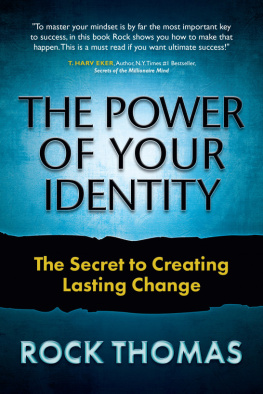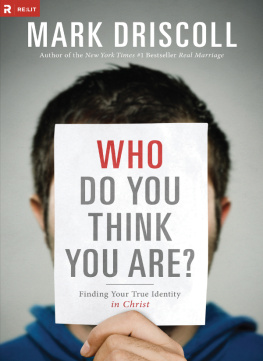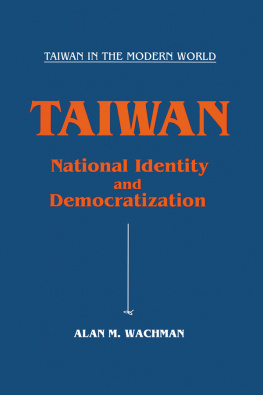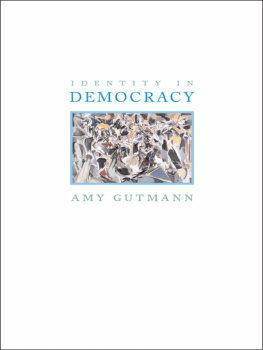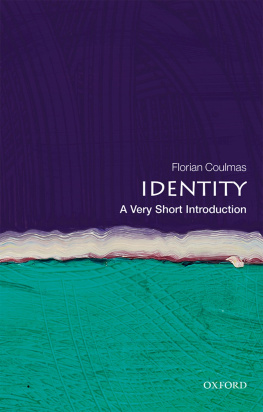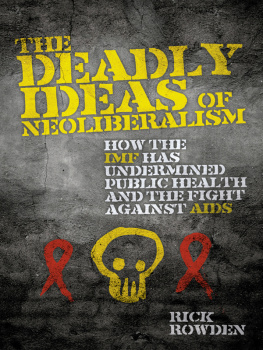First published 2000 by Gower Publishing
Reissued 2018 by Routledge
2 Park Square, Milton Park, Abingdon, Oxon OX14 4RN
711 Third Avenue, New York, NY 10017, USA
Routledge is an imprint of the Taylor & Francis Group, an informa business
Copyright Mark Rowden 2000
Mark Rowden has asserted his right under the Copyright, Designs and Patents Act 1988 to be identified as the author of this work.
All rights reserved. No part of this book may be reprinted or reproduced or utilised in any form or by any electronic, mechanical, or other means, now known or hereafter invented, including photocopying and recording, or in any information storage or retrieval system, without permission in writing from the publishers.
Notice:
Product or corporate names may be trademarks or registered trademarks, and are used only for identification and explanation without intent to infringe.
Publishers Note
The publisher has gone to great lengths to ensure the quality of this reprint but points out that some imperfections in the original copies may be apparent.
Disclaimer
The publisher has made every effort to trace copyright holders and welcomes correspondence from those they have been unable to contact.
Designed by Mark Rowden.
A Library of Congress record exists under LC control number: 00362598
ISBN 13: 978-1-138-71066-5 (hbk)
ISBN 13: 978-1-315-20057-6 (ebk)
Issues surrounding the role of identity have reached the stage where more explanation is not only beneficial but essential if the debate about the subject is to be advanced. A firmer and more precise framework is needed for all those who wish to benefit from using designwhich ought to include everybody, certainly in managementand for the education of all those who operate within its boundaries.
The overall strategy of an organisation is directly connected to its identity, and every marketing or communication element must be purposefully and effectively sprung from that central point. Many identity projects start life as almost impenetrably confusing: a new ambitious organisation or product launch; the new technology no one is entirely sure how to market; an identity that has seriously gone awry; the organisation taking over or being taken over; the young or established organisation struggling to define itself; and many other scenarios besides. Each project presents itself differently, yet the threads that run between each identity problem and its successful solution remain similar. The fundamental issues remain the same, though they may seem invisible to most. Perhaps they are simply inexplicable to all but the most visually literate: those designers who often quietly solve the problems regardless of client or studio management; and perhaps they in turn cannot readily articulate their insight.
As a design consultant who has chosen always to work independently, I have been able to progress my approach, and my system of beliefs, in response to the realities of one-to-one consulting with a highly diverse range of organisations. Many of these are based in the economic boom area of Cambridge, an area rich in unusually creative, mostly high technology businesses, led by many unusual minds, and a few geniuses, making it all the more fascinating.
Idealistic though it is, my priority has been forging the type of often very personal client relationships that I believe are the best: creative partnerships which allow no unnecessary obstacles between the creativity required and the problem to be solved. Continually drawn into an exceptionally wide range of design and identity projects, I aim to select projects according to the integrity and purpose of the client, whatever the challenges or difficulties presented by their desires, objectives, brief or any other form of restriction.
To write about identity in any worthwhile way is difficult. This book is a response to the frustrating gulf which so often opens up between the designer and the client organisation. Writing it is partly the result of needing to analyse and describe what I have so often left unexplained or unjustifiedusually because a client or fellow worker has let me escape without proper explanation. I hope it helps readers to create, manage and sustain an identity, as well as offering the means to probe and evaluate the identity of another.
As so often happens, the idea of a book began with something someone said, in this case by Sue Wallis during a conversation one spring morning at LaserScan, Cambridge. It seemed such a casual and minor aside that she probably does not recall it. Discussions continued through a progression of what others also said and, on occasions, didnt! Willing and unwitting contributors, to name but a few, have included the crucial and encouraging Philip Taylor (product designer and consultant), Richard Longdon and Steven Talbott (Cadcentre), Martin Sebborn (Spectreview), John Barker (Grant Instruments), the most helpful, spirited and spiritual advisor Geoff Dodgson (Chamberlain Partnership), the philosophical eagle eye of Bob Seymore (photographer), and the astute editing of Suzie Duke.
Acknowledgement is also due to the Watford College of Printing and Packaging, now known as West Herts College Faculty of Visual Communication, where, as an artist, I enlisted to study typographic design under the supervision of Os Turner, Mike Matthews and the influential Howard Patterson.
That was in the days when a sharp pencil and a crisp brain were the only computers available. Now, with high-tech tools and communication channels, an organisations identity and the principles that underpin it are predictably becoming more decisive and crucial than ever. We live in an age in which we are pounded with information, and amongst this din and clutter an identity needs to speak with clarity and purpose.
The Art of Identity is written for individuals and organisations, whoever or whatever you are, professional, student, creative or less so. To know more about identity is to know more about yourself. This means having a willingness to sit back and think: a rare commodity in such a hurrying age. I hope that this book offers you the opportunity to do just that.
Ultimately, all identity is a lie. This is because identity is a mask you choose to wear; or it is a mask you choose to see. As such, it appears as a fixed image within an otherwise moving world.
That is not to say that an identity should not attempt to be truthful. It is an acknowledgement that people and organisations are in a permanent state of change, and the image they wish to project may be at variance with the truth of where they are today. Indeed, their image may be the intention of what they want to be or how they wish to be seen. Truly effective identity manages this reality gap, promoting a set of deliberate messages and providing sufficient flexibility for the identity to grow with the individual or organisations growth.
Thoughtthere are identifiable laws regarding identity.
These laws have, within the limits of your audience, controllable aspects. You have a choice to deliberately determine the reality gap of your identity, or leave it to chance.




